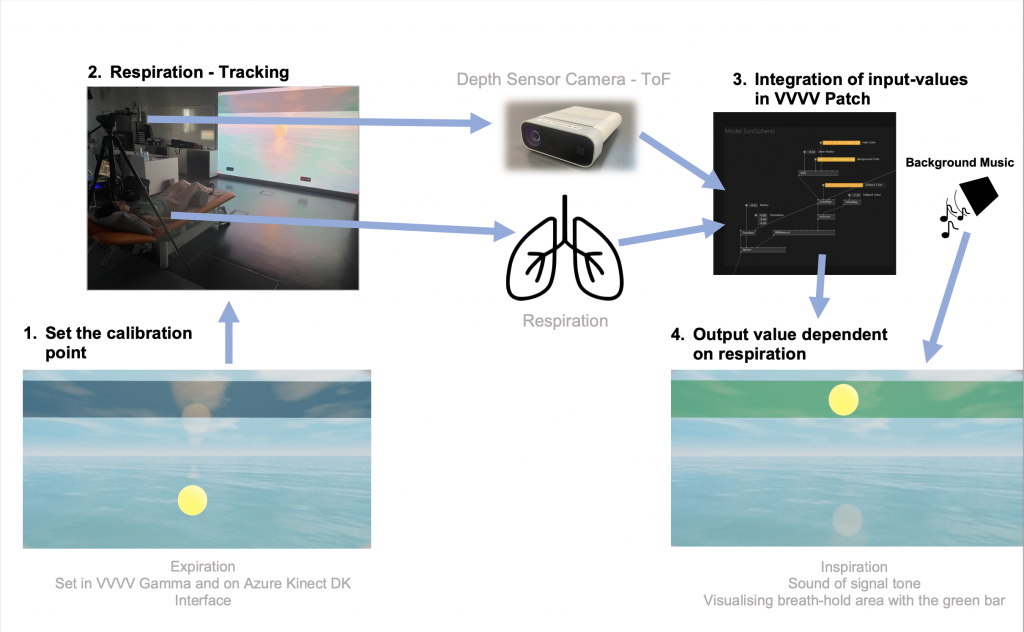Prototypical Development and Usability Testing of an Audio-Visual Feedback System for Deep Inspiration Breath Hold Technique in left-sided Mamma Carcinoma Patients using a Depth-Sensing Camera
Aim and Research Question(s)
This thesis aims to determine the functional and technical requirements of a audio-visual real-time feedback system using the Azure Kinect DK camera for respiration measurements. Furthermore, it is explored if the treatment time per fraction can be reduced and if the performance accuracy during the breath-hold phases can be increased using the audio-visual prototype in a simulative radiotherapy test setting.
Background
Many women are affected by breast cancer [1]. Most patients with left-sided breast cancer are treated with radiotherapy using the deep inspiration breath hold technique [1]. This technique requires the patient's to hold their breath in a prescribed range for as long as possible thus better protecting lung and heart tissue from radiation and minimising side effects [2]. Only the radiologic technologist is able to see the patient's respiratory curve and therefore guides them to stay within the required breath-holding range.
Methods
Figure 1: Functionality of the audio-visual feedback system Using the user-centred design process interviews with five radiologic technologists from radiotherapy departments in Austria were conducted. An audio-visual prototype was
Using the user-centred design process interviews with five radiologic technologists from radiotherapy departments in Austria were conducted. An audio-visual prototype was
implemented using the visual coding environment VVVV Gamma and the Azure Kinect DK camera. The implemented prototype was evaluated with usability tests with ten healthy female participants. They were divided into two groups, Group A and Group B. During testing, the participants were instructed to hold their breath in a predefined breath-hold area. Group A recieved breath-holding commands, while Group B additionally used the audio-visual prototype. The task completion rate was used to measure the correctness of the execution of the breath-holding phase. The task completion time measured the time to reach the ideal breath-holding range starting at expiration and examined if there is a change in the treatment time per fraction.
Results and Discussion
The calculated mean value for the task completion rate was 67.1 % in Group A and 97.1 % in Group B. These results show that participants in Group B are more likely to complete the task on the first attempt in comparison to Group A. The audio-visual prototype additionally reduces the task completion time in the laboratory setting, as shown in the differing mean time values of 5.088 sec in Group A and 2.669 sec in Group B.
Conclusion
For a functional feedback system, a suitable visual coding environment is needed which can communicate with depth-sensing cameras and existing interfaces within the radiotherapy room. First hints of increased correctness in the execution of the breath-holding phase and a possible reduction in treatment time per fraction in a simulated radiotherapy setting could be achieved.
References
[1] S. Corradini (2018). 'Moderne Strahlentherapie des Mammakarzinoms- Regionale Versorgungsstrukturen und innovative Behandlungsverfahren'. [2] C. Bergom et al. (2018). doi: 10.3389/fonc.2018.00087.
